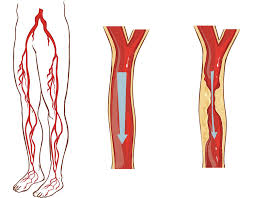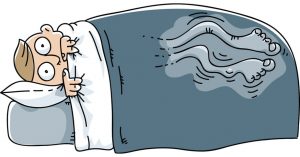Lumbar Spinal Stenosis
 Spinal stenosis is a narrowing of the space within the spine. This can put pressure on the nerves that travel through the spine. It occurs most often in the lower back and the neck. Some people are born with a congenital form, but most develop it as part of the degenerative cascade. Sometimes people do not feel effects of the narrowing, but as part of the aging process, most people will eventually notice radiating pain, weakness, and/or numbness secondary to the compression of the nerves or spinal cord. In lumbar stenosis, the spinal nerve roots in the lower back become compressed and this can produce – tingling, weakness or numbness that radiates from the low back and into the buttocks and legs, especially with activity.
Spinal stenosis is a narrowing of the space within the spine. This can put pressure on the nerves that travel through the spine. It occurs most often in the lower back and the neck. Some people are born with a congenital form, but most develop it as part of the degenerative cascade. Sometimes people do not feel effects of the narrowing, but as part of the aging process, most people will eventually notice radiating pain, weakness, and/or numbness secondary to the compression of the nerves or spinal cord. In lumbar stenosis, the spinal nerve roots in the lower back become compressed and this can produce – tingling, weakness or numbness that radiates from the low back and into the buttocks and legs, especially with activity.
Lumbar spinal stenosis often mimics the symptoms of vascular insufficiency. Both conditions can cause claudication, which means leg pain with walking. If vascular studies identify normal blood flow, and tests confirm spinal stenosis,the symptoms are then referred to as neurogenic claudication.
Common Symptoms
Develops slowly over time
Comes and goes, as opposed to continuous pain
Occurring during certain activities (such as walking and/or positions such as standing upright for lumbar stenosis)
Burning pain in buttocks or legs (sciatica). Pressure on spinal nerves can result in pain in the areas that the nerves supply. The pain may be described as an ache or a burning feeling. It typically starts in the area of the buttocks and radiates down the leg. As it progresses, it can result in pain in the foot.
Numbness or tingling in buttocks or legs. As pressure on the nerve increases, numbness and tingling often accompany the burning pain. Although not all patients will have both burning pain and numbness and tingling.
Weakness in the legs or “foot drop.” Once the pressure reaches a critical level, weakness can occur in one or both legs. Some patients will have a foot-drop, or the feeling that their foot slaps on the ground while walking.
Less pain with leaning forward, resting or sitting. Studies of the lumbar spine show that leaning forward can actually increase the space available for the nerves. Many patients may note relief when leaning forward and especially with sitting. Pain is usually made worse by standing up straight and walking. Some patients note that they can ride a stationary bike or walk leaning on a shopping cart. Walking more than 1 or 2 blocks, however, may bring on severe sciatica or weakness. For lumbar stenosis, flexing forward will open up the spinal canal relieving the leg pain and other symptoms. Numbness and tingling can accompany the pain.
Note : You will be able to walk or cycle away once you are bent forward with lumbar spinal stenosis. This will not help in cases of vascular insufficiency.
Diagnosis of Spinal Stenosis
MRI scan or a CT scan with myelogram(using an X-ray dye in the spinal sac fluid), and sometimes both. Plain CT scans can better identify bony causes of the condition, but cannot give the same detail for soft tissue causes of stenosis such as disc bulges, disc herniations, and ligament hypertrophy.
Treatment
There is a wide range of nonoperative treatments for spinal stenosis. The more common options include:
Exercises – A suitable program of physical therapy and exercise is used. While the spinal stenosis exercises are not a cure, it is important for patients to remain active and not become additionally debilitated from inactivity.
Activity modification – Patients are usually counseled to avoid activities that worsen their spinal stenosis symptoms. For lumbar stenosis, patients are typically more comfortable while flexed forward. For example, recommended activity modification might include walking while bent over and leaning on a walker or shopping cart instead of walking upright; stationary biking (leaning forward on the handlebars) is another option. Also sitting in a recliner instead of on a straight-back chair may provide more relief.
Epidural injections – An injection of cortisone into the space outside the dura (the epidural space) can temporarily relieve the symptoms of spinal stenosis. However several recent studies have questioned the long term efficacy of these injections in the treatment of spinal stenosis.
Medication – Anti-inflammatory medication (such as aspirin or ibuprofen) may help alleviate spinal stenosis symptoms. With careful use, a short term course of narcotic medication may be helpful for severe episodes of nerve related pain. Some physicians will also prescribe muscle relaxants and/or nerve desensitizing medications such as gabapentin.
Surgery for Spinal Stenosis
In most cases of advanced claudication (spinal or vascular), decompression surgery is required to treat the symptoms of spinal stenosis.
Physiotherapists in Tralee : Phone 086-7700191

 Restless legs syndrome(RLS) is a nervous system disorder resulting in an urge to move the legs. Because it usually interferes with sleep, it also is considered a sleep disorder. The condition causes an uncomfortable, “itchy,” “pins and needles,” or “creepy crawly” type feeling in the legs. These sensations are usually worse at rest, especially when lying or sitting. The symptoms are generally also worse in the evening and at night. The severity of RLS symptoms varies from mild to intolerable. Symptoms can come and go and vary widely in severity. For some people, symptoms may lead to severe sleep disturbance at night. This can significantly impair their quality of life.
Restless legs syndrome(RLS) is a nervous system disorder resulting in an urge to move the legs. Because it usually interferes with sleep, it also is considered a sleep disorder. The condition causes an uncomfortable, “itchy,” “pins and needles,” or “creepy crawly” type feeling in the legs. These sensations are usually worse at rest, especially when lying or sitting. The symptoms are generally also worse in the evening and at night. The severity of RLS symptoms varies from mild to intolerable. Symptoms can come and go and vary widely in severity. For some people, symptoms may lead to severe sleep disturbance at night. This can significantly impair their quality of life.